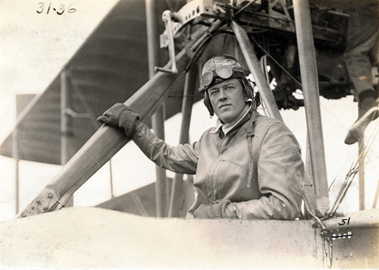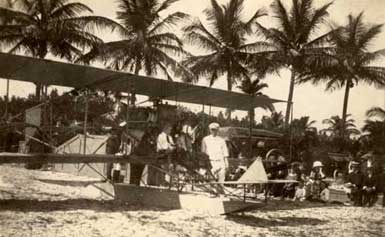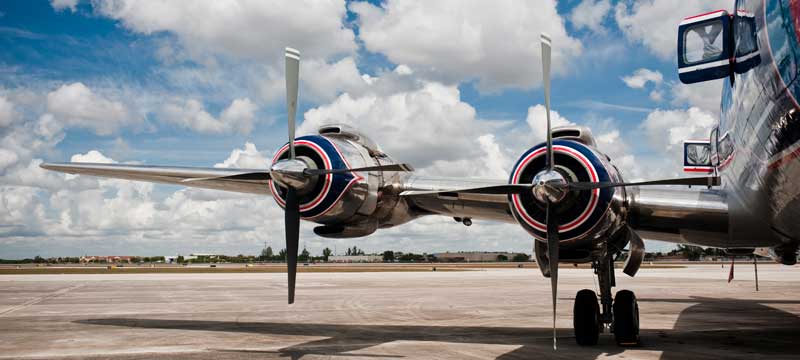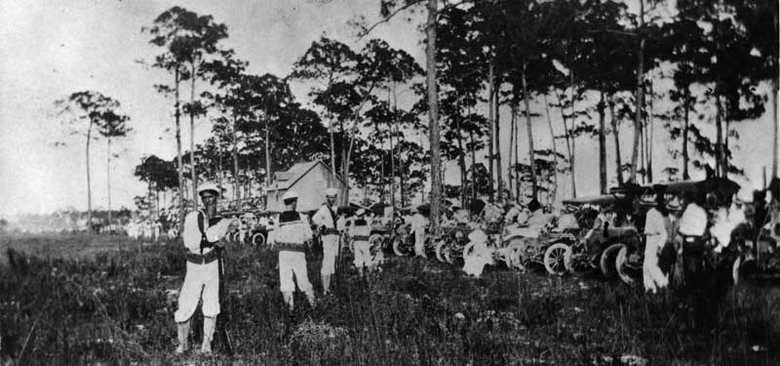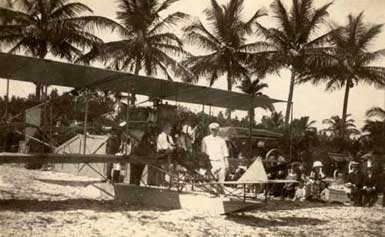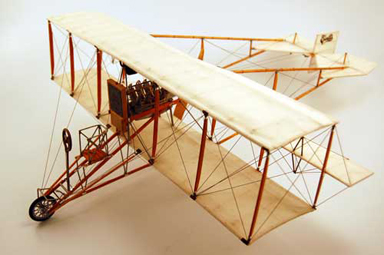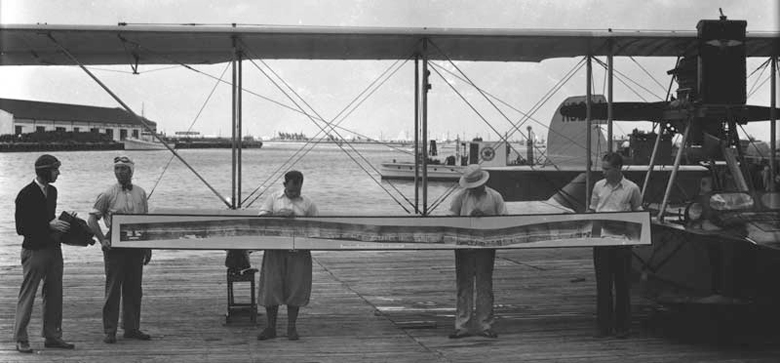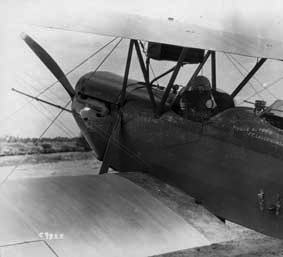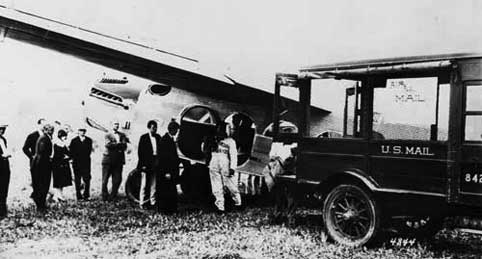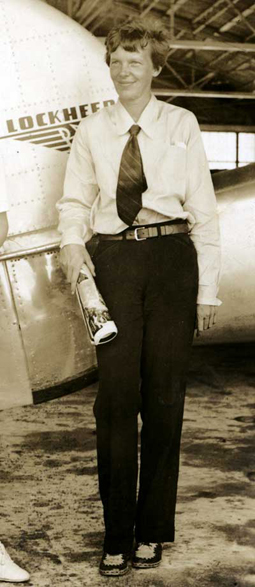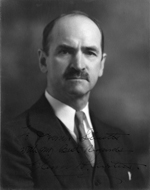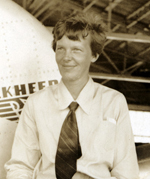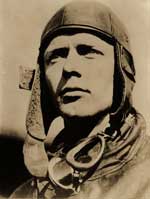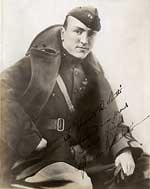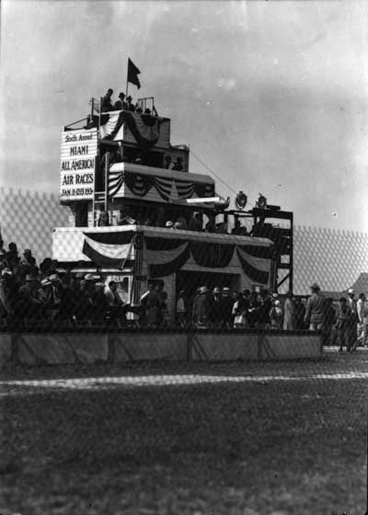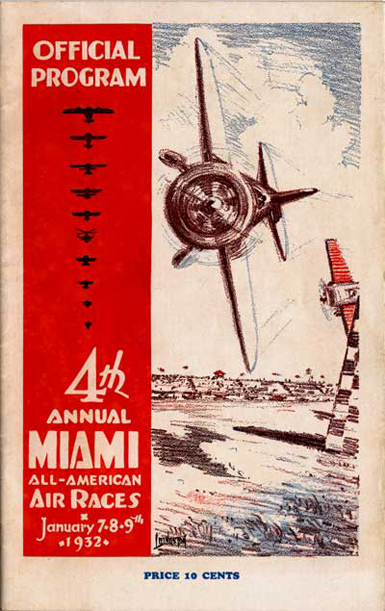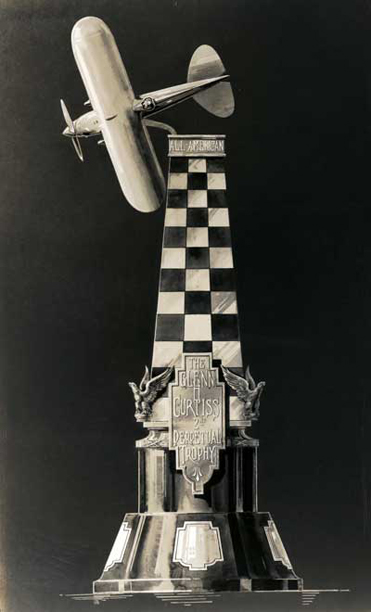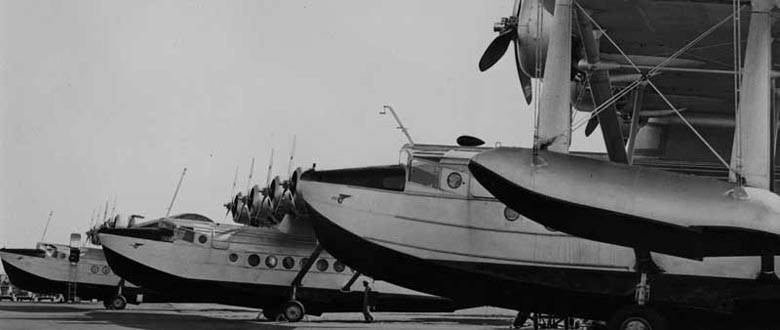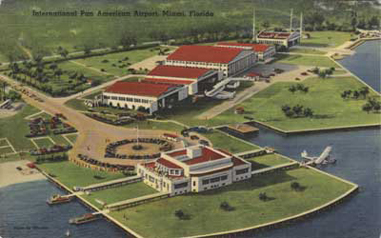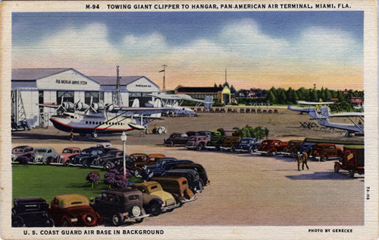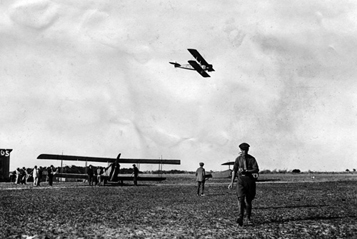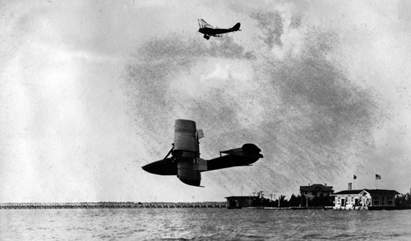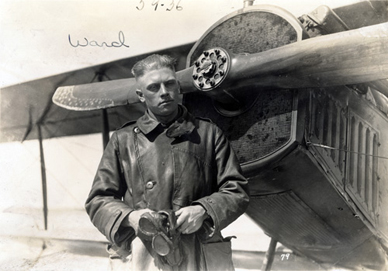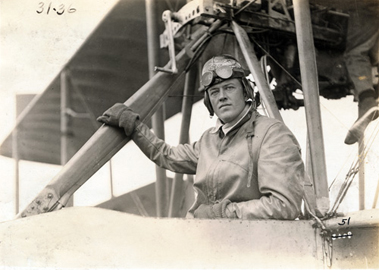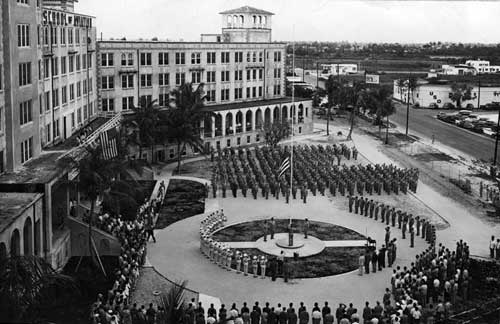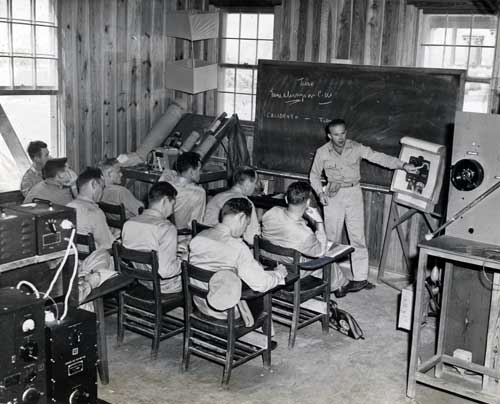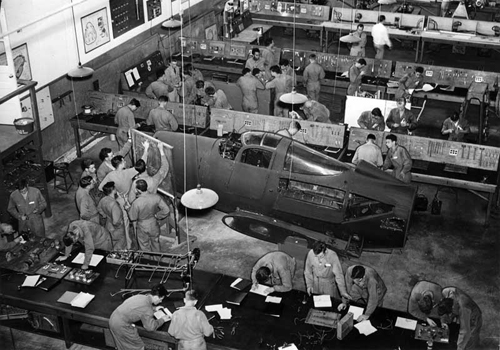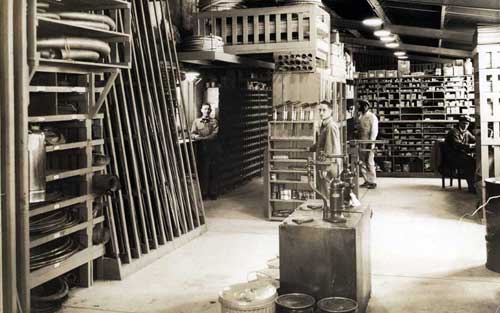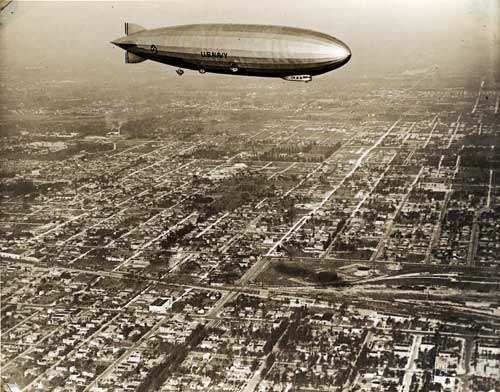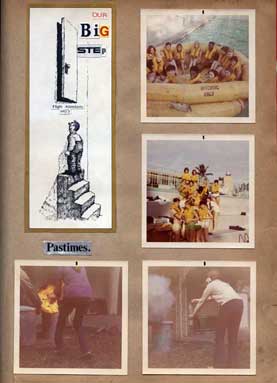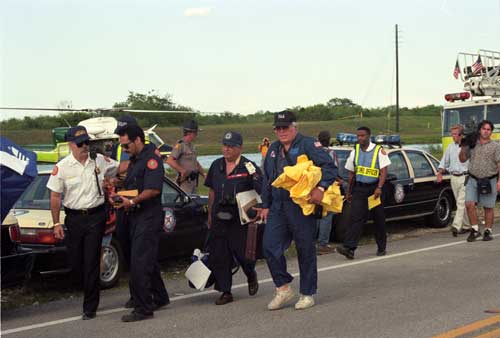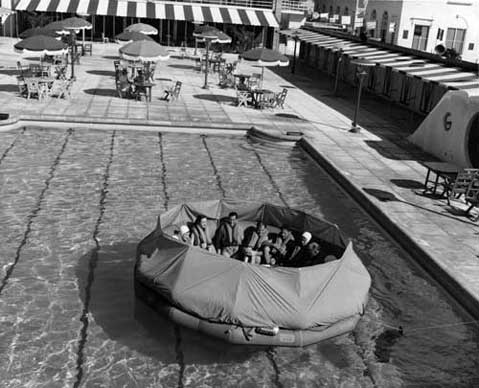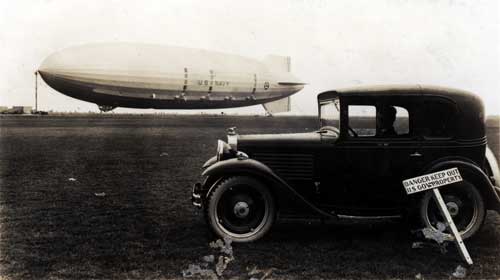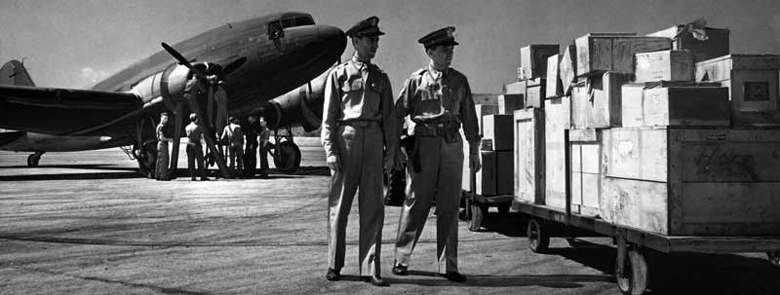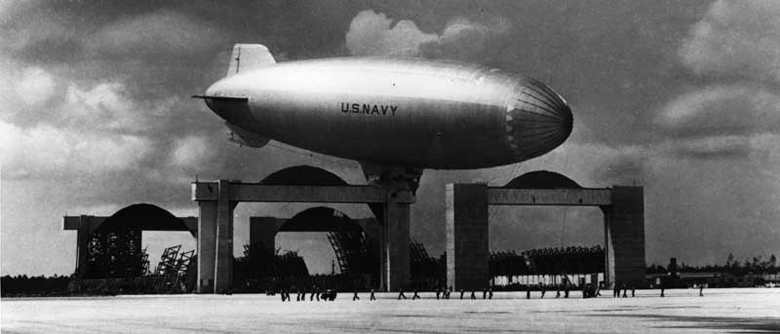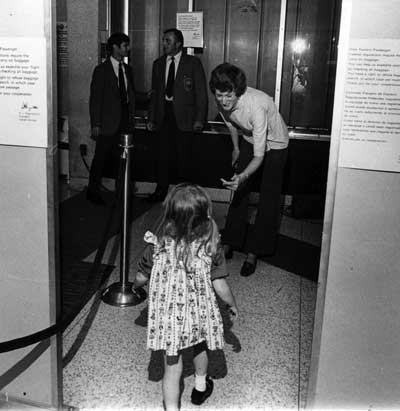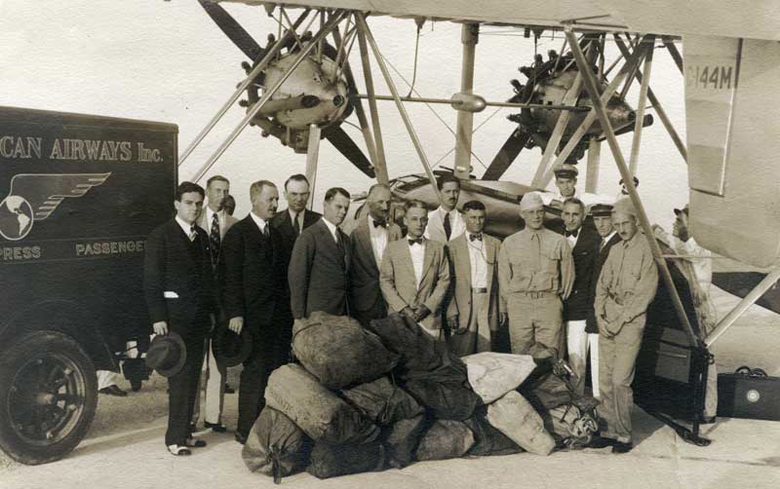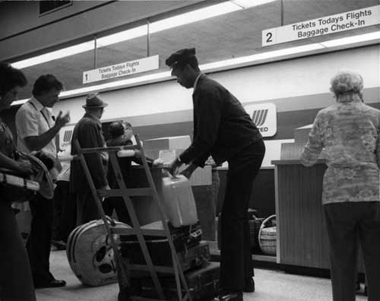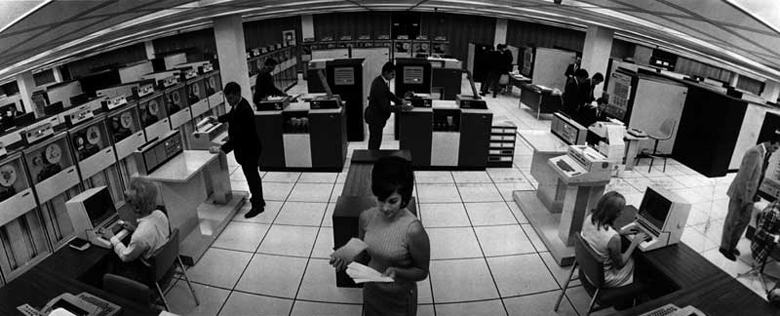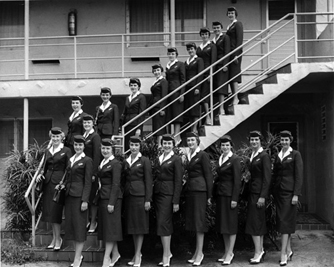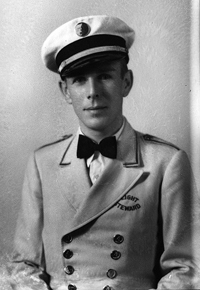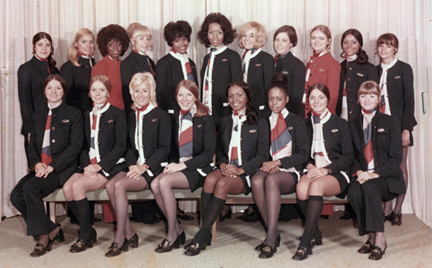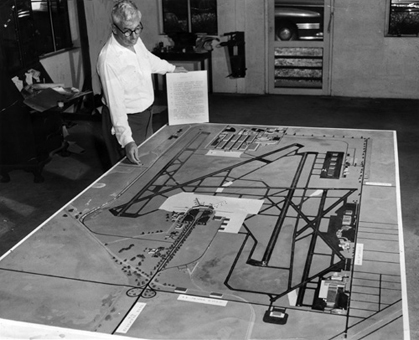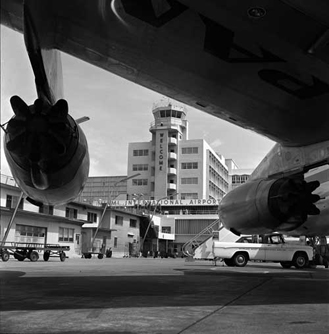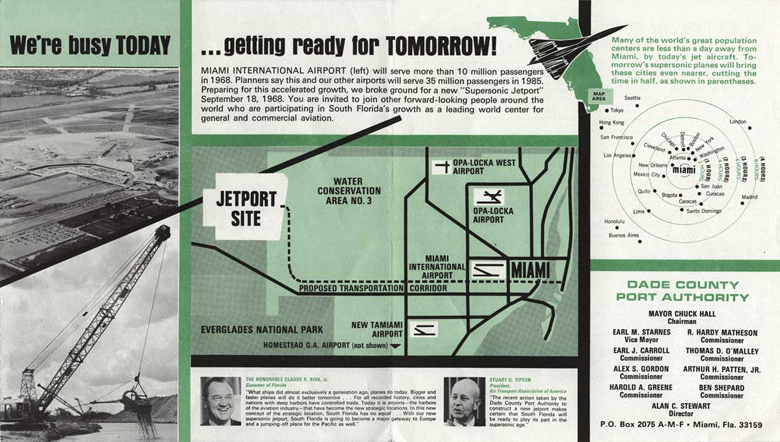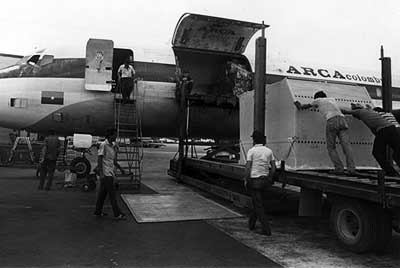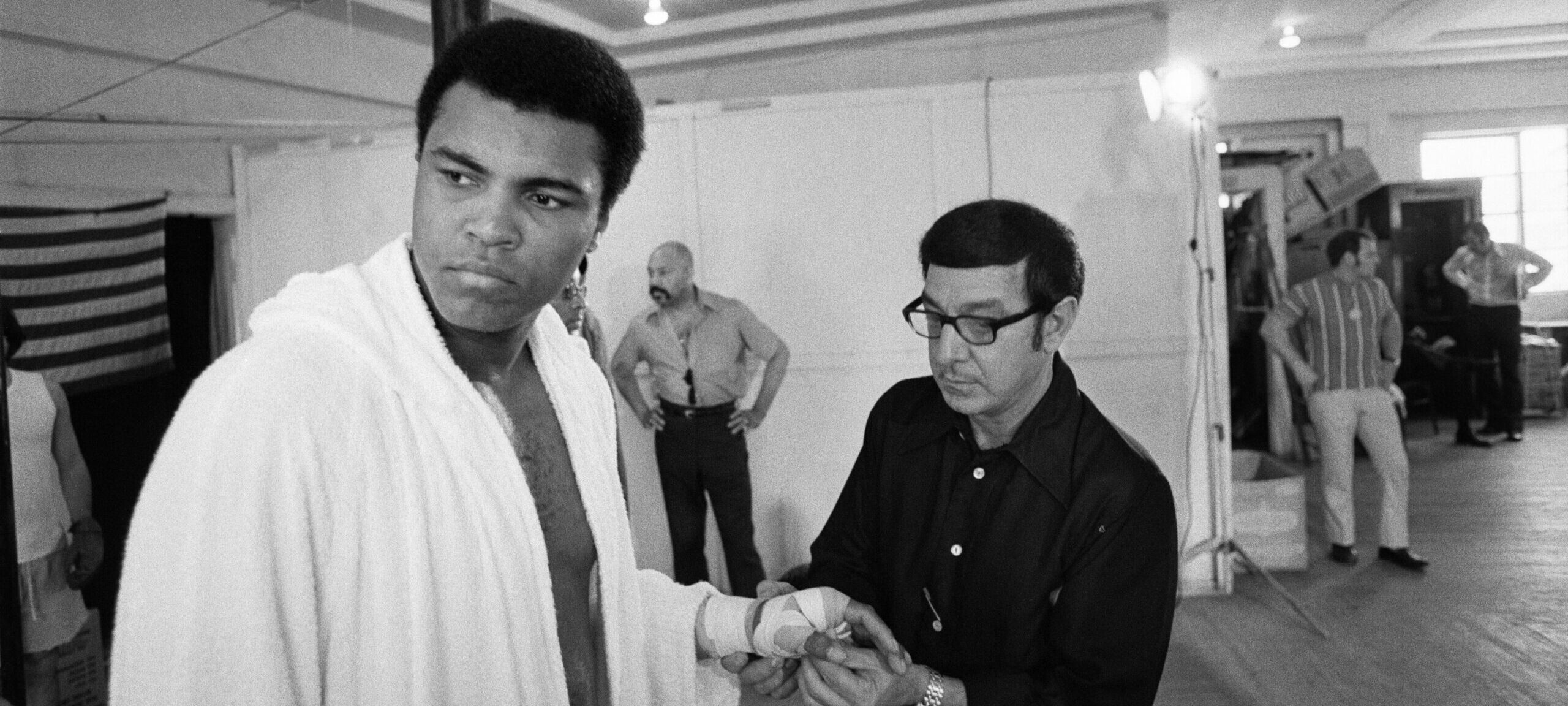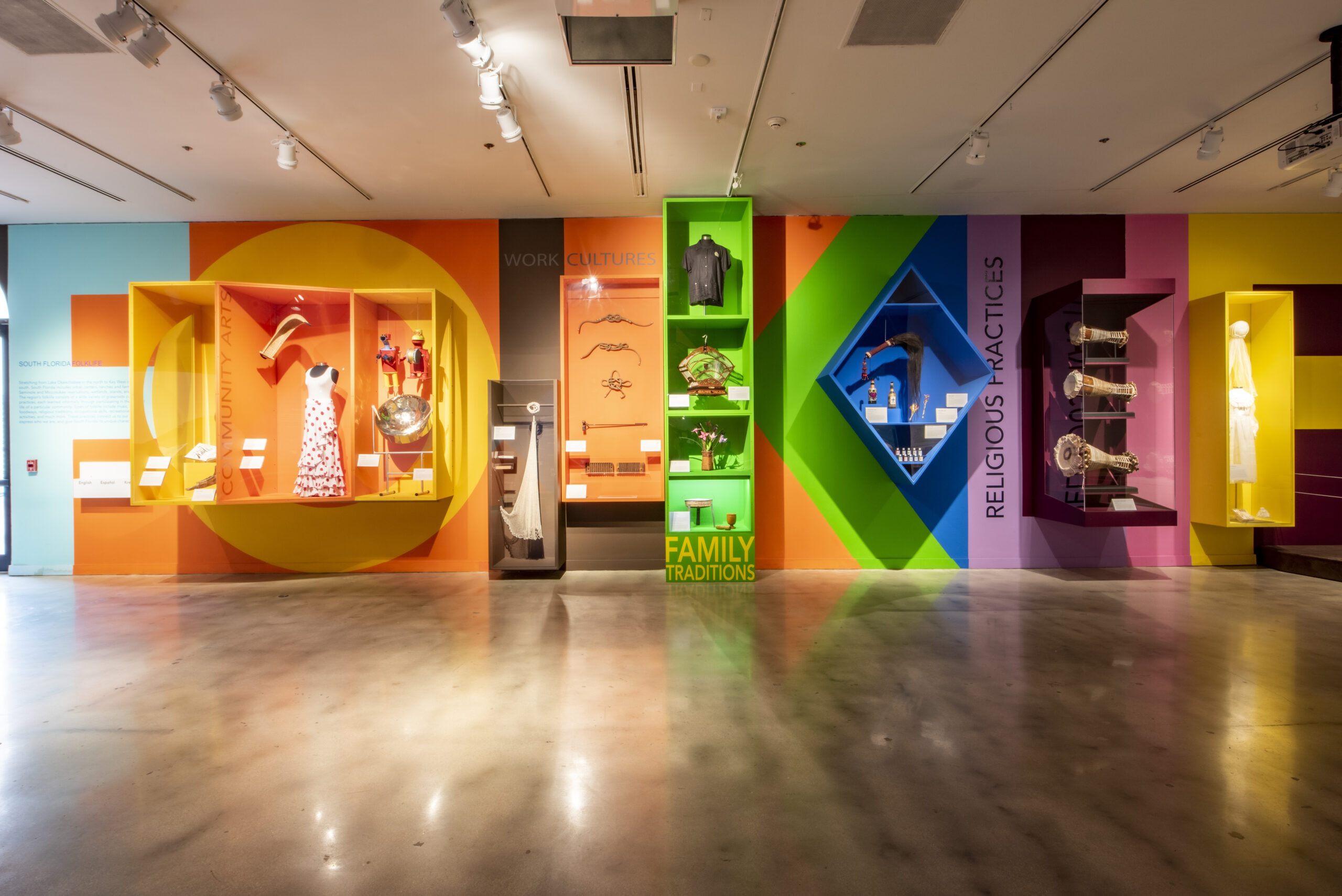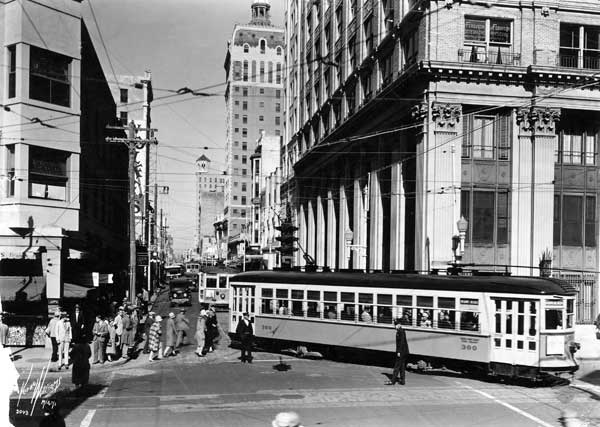Aviation in Miami
The First 100 Years
June 30, 2011 - July 22, 2012
ONLINE
THE FIRST HISTORIC FLIGHTS
The 1911 Flying Exhibition
It began with a big idea …
..conceived by businessman E. S. Peets in 1910. Why not host a flying exhibition here in Miami? Most Miamians had never seen an “aeroplane,” much less witnessed one fly! Air meets were being staged elsewhere, including nearby Tampa and Havana. So Peets sold the idea to Miami’s Board of Trade, who contacted the Curtiss Exhibition Company. Both tried, but failed, to find the right spot for flying and charging admission. Months later, the idea took off again when Everest G. Sewell, President of the Merchants’ Association and future mayor of Miami, convinced local businessmen to finance the event. Soon a contract was signed with the Wright Brothers to send an aviator and an “aeroplane” in time for Miami’s fifteenth anniversary celebrations from July 20-22, 1911. 5,000 people turned out.
The event was free, but you could buy a bleacher seat for 25 cents. And if you had the dough and the nerve, you could book a 15-minute ride for yourself for $100. During the exhibition, aviator Howard Gill climbed into his “aeroplane” — a cloth-winged biplane with a 35 horse power engine — and flew up over the Miami Golf Links two times. Best part of the day? Gill taking Sewell for a ride 1,000 feet high. Some weren’t sure Sewell would make it back in one piece — but he did — and the flying bug had bitten him. As far as he was concerned, Aviation had a FUTURE in Miami.
A century later, there are millions of people and dozens of air sites past and present in Miami to attest to it.
The 1912 Flying Exhibition
What’s one flying exhibition without another?
To secure Miami’s prospects in the aviation industry, Ev Sewell returned to Glenn Curtiss, this time to start a flying school. By December 1911, a deal was struck; Miami would pay Curtiss $1000, and Curtiss would operate an aviation school that very winter. To launch it all, a second exhibition was planned for January 19, 1912, featuring aviator C.C. Witmer, the school’s first director and trainer. Crowds turned out to watch as Witmer took off from Braddock’s Pasture and flew the very first flight over the actual city. Flying down the Miami River and over Biscayne Bay, he circled the Royal Palm Hotel, then flew directly over Flagler Street. Planes in the air would become commonplace in the next two months as the school trained student pilots. Miami’s skies have rarely been empty of aircraft since.SELLING
City officials and aviation industry businessmen worked hard to promote Miami’s promise as aviation center and to convince people fly.
Selling Early Aviation in Miami
It was one thing for thrill-seekers to pay for a 15-minute recreational flight or for World War I military aviators to risk their lives in the sky, and quite another to convince Aunt Betty and the cousins to trade their safe, comfortable train ride from New York to Miami for a flight on a newfangled airplane. In the early 1920s, flying wasn’t a travel option for many. Aircraft were cramped, noisy and had limited range and when flying over land routes, they also weren’t much faster than trains. Worst of all, airplanes crashed due to mechanical failure or adverse weather with alarming frequency. With these limited prospects, early aviators in Miami worked mainly in the fields of airmail service and aerial photography. They also provided sightseeing flights to daring tourists and lessons to recreational pilots. Despite negative public perception, Miami did have one hefty advantage when it came to developing passenger flights: the city was at end of a long peninsula and, for continued travel to Cuba and the Bahamas, airplanes were faster than ships. Early airlines founded in Miami, such as Chalk’s and Aeromarine Airways, offered flights to the Bahamas and other Caribbean destinations. All but Chalk’s, however, failed after a brief time, casting dim prospects on the future of passenger flights.Pioneering Aviators
One major event helped shift negative public perceptions of flying nationwide. In May 1927, Charles Lindbergh captured the public’s admiration by completing the first successful trans-Atlantic flight. For Wall Street investors, this achievement signaled that there was finally money to be made in aviation beyond the military. It also led financier Clement Keys to form the North American Aviation Holding Company, which invested in fledging airlines. In Miami, Lindbergh’s flight led to the 1927 formation of the Greater Miami Airport Association, whose first goal was to establish a municipal airport and related infrastructure to meet the needs of all types of aircraft. Taking its cue from the public adoration for pioneer aviators, the local aviation industry used iconic aviation figures and heroes such as Charles Lindbergh and Amelia Earhart to promote aviation as not only safe, but also glamorous. Until that time, most airline passengers were wealthy businessmen and a few adventurous women. Earhart’s presence made women feel safe in the air. Lindbergh garnered publicity by flying a number of inaugural flights between Miami, Latin America and the Caribbean. And flying ace Eddie Rickenbacker used his war hero stature to sell travel aboard Eastern Airlines. Unable to secure financial backing in the United States, Audubon went to Europe in 1826. There he found both subscribers and engravers for the project. The first prints were made that same year. Over the next twelve years, Audubon divided his time between London and America. When abroad, he supervised the engraving and coloring of the prints. In America, he traveled in search of birds to paint. Audubon returned from England in 1831 to draw new birds for the folio. His first expedition was to the east coast of Florida to find water birds and tropical species. George Lehman, a landscape painter, came to do backgrounds for the bird portraits.Iconic Aviation Figures
A number of leading city and aviation officials worked to promote Miami’s prospects as an aviation center. Among them were Glenn Curtiss, Reginald Waters, E. G. Sewell and others who formally established the Greater Miami Airports Association (GMAA) in July 1927. The construction of a permanent airport was its main long-term goal.Glenn Curtiss
Aviation pioneer Glenn Curtiss started Miami first two flying schools, was a founding member of the GMAA and developed the cities of Hialeah, Miami Springs and Opa-locka.Amelia Earhart
In 1937, Amelia Earhart launched her fatal around-the-world flight here in Miami but prior to that she visited Miami twice as a guest promoter for the aviation industry. During her first visit in 1932, she attended the opening ceremonies at Miami’s 36th Street Airport and helped promote the All American Air Maneuvers and during the second, she delivered a speech to a local organization. Earhart’s accomplishments encouraged women and children to feel safer about flying.Charles Lindbergh
Pilot and aviation pioneer Charles Lindbergh became the aviation industry’s biggest celebrity. As a pilot for Miami-based Pan American World Airways, he mapped routes and inaugurated flying service to increasingly distant Latin American destinations. His heroic image served to enhance the popularity and mystique of air travel. Charles Lindbergh’s successful New York to Paris flight on May 20, 1927, completely changed the way that Americans looked at aviation. For Wall Street investors, this seemed to be the signal that finally there was money to be made in aviation beyond the military and mail.Eddie Rickenbacker
During World War II, Eddie Rickenbacker and his B-17 crew ditched in the Pacific Ocean. They survived 21 days at sea before being rescued. Rickenbacker’s inspirational account is sometimes still quoted. His heroic image sold the flying public on the idea that “Captain Rickenbacker would be watching out for them.” Eddie Rickenbacker later became an executive for Miami-based Eastern Airlines. Portrait given by Eddie Rickenbacker to Miami Herald editor Frank Shutts. Circa 1918. Frank Shutts Collection, HistoryMiami. 1953-001-23.Miami All American Air Maneuvers
One of the Miami aviation industry’s most important promotional efforts was the annual All American Air Maneuvers. Starting in January 1929, these air meets brought much needed tourist dollars to Greater Miami’s still struggling economy, promoting and advancing the city’s standing as an international center for aviation. Among the activities that took place during this well-attended event were air races, flying exhibitions, showcases of the newest aircraft and ribbon-cutting events for new aviation facilities.Pan American Airport at Dinner Key
On March 25, 1934, Pan American World Airways dedicated its new terminal building at Dinner Key. A major attraction for both tourists and locals, the sleek, modern facility did as much to promote aviation in Miami as the airline who owned it. Visitors flocked by the thousands each month to watch Pan Am’s famous flying boats arrive and depart, view the 10-foot globe in the terminal’s lobby and gawk at celebrities and dignitaries.SAFETY
Miami played a major role in the training and infrastructure needed to make flying safer and meet the early aviation needs of the military.
Curtiss Flying School
Anticipating U.S. involvement in World War I, Glenn Curtiss and Carl Fisher opened the Curtiss Flying School on Miami Beach in December 1916 and trained Army cadets for a brief time. In 1918, the U.S. Marine Corps took over the school. U.S. Marine pilots who trained at the school flew missions over France. World War I pilots trained on and operated the Curtiss JN-4 aircraft (known as the “Jenny”), which was powered by the water-cooled V-8 OX-5 engine.Pilot Training in Miami
Piloting a plane in the early 1900s wasn’t anything like it is today. Airports were sparse and runways – if they existed at all – weren’t equipped with lights or navigational equipment to help planes land and take off. Aircraft construction was evolving, and trained pilots, mechanics and navigators were scarce. Bottom line? If aviation was going to have a future here, Miami had to acquire the infrastructure needed to make flying safer. With the 1912 opening of the Curtiss Aviation School, Miami became an important site for pilot and mechanic training. Attracted by the area’s moderate weather and flat terrain, the U.S. Marines, Navy and Army all established local air fields and pilot training programs during World War I. Both the University of Miami and the Curtiss Aviation School ran aviation training programs throughout the 1920s. Over the next three decades other schools followed, including Embry-Riddle, Miami Dade College and the George T. Baker School of Aviation. In the late 1970s, Pan American World Airways built a flight academy behind its “Taj Mahal” regional headquarters that is still in business today. The academy includes everything from flight simulators to a swimming pool for aircraft evacuation drills. Present-day Miami-Dade continues to boast numerous pilot training programs throughout the county.Aircraft Maintenance and Mechanics in Miami
Until the 1930s, there was almost no difference between pilot and mechanic training. In fact, a student pilot’s first task was usually to assemble the plane he or she was going to fly. But even before aircraft maintenance developed into a specialized field, Miami had become a recognized site for these operations. The presence of early airlines such as Pan American World Airways and military aviation programs such as the Naval Reserve Air Base provided employment opportunities for aircraft mechanics from around the world, which in turn provided instruction to the area’s student pilots and mechanics. Amelia Earhart began her around-the-world flight from Miami so that Pan Am’s mechanics – considered to be the best – could spend a week looking over and insuring the safety of her airplane.Rescue Operations in Miami
As long as airplanes have been flying, they have also been crashing, so early airlines made certain that all on-board crew were trained in rescue operations. Miami-based pilots, navigators and flight attendants all received instruction in ditching, fire suppression and basic emergency medical procedures. Early flight attendants were often chosen for their strength (if they were men) and their medical skills (if they were women), as in 1930 when United Airlines hired Ellen Church, a registered nurse, as its first female flight attendant. As rescue operations became more advanced and the dangers of crashes better understood, the Miami-Dade Aviation Department established fire stations, staffed with crews and fire-rescue vehicles, at all airports – allowing for rapid response to crashes, fuel spills and other accidents. Airplane crashes have also provided important lessons learned. In December 1972, Eastern Airlines flight 401 crashed in the Everglades on final approach to MIA. The inquest held in March 1973 determined the crash was due to human error arisin from cockpit procedures. The lessons learned from this crash led to an airline-wide revision of these practices. The last major crash out of MIA occurred in 1996 when a gas canister on a ValuJet flight hold exploded shortly after take-off. As a result of this inquest, FAA completely revised regulations governing the packaging and carrying of items in cargo holds.SECURITY
Miami was often in the picture when it came to aviation’s intersection with international politics.
Early Threats From the Sky
Miami’s airlines, air fields and people have been historic players in the development of national security threats posed by air travel over the past 70 years. Three news-making events in the 1930s served as ominous symbols of this involvement. In 1931 and 1933, Miami’s air sites played host to German advances in air power in the form of visits from the Dornier DO X and the Graf Zeppelin. These events predicted Miami’s strategic importance for air travel and transport during World War II. Then, in August of 1933, a Pan American World Airways flight from Havana to Miami provided the means for a risky escape for Cuban minister Orestes Ferrara after the overthrow of Cuban president Gerardo Machado, foreshadowing Miami’s future role as a frequent destination for or origin of a long rash of politically motivated airplane hijackings from the late 1950s to the 1980sDirigibles and the Dornier DO X
Constructed in 1929, the German-built Dornier DO X, the largest, heaviest and most powerful aircraft of its time, paid a well-publicized visit to Miami (its first U.S. landing) in August 1931 while on its way to New York from Brazil. Starting in the 1920s, the U.S. and other countries added dirigibles and mooring masts to their military defenses. Two U.S. dirigibles, the Macon and the Akron, moored at the U.S. Navy’s mast at Opa-locka during the 1930s. In October 1933, the Graf Zeppelin, sporting a swastika (the symbol of the Nazi party) on its rudder, moored at the Opa-locka dirigible mooring mast while en route from Rio de Janeiro to Chicago. Concerned that such a display could provoke protest, Florida Governor David Sholtz established a secure perimeter at Opa-locka.Protection in the Skies
Miami was home to numerous defensive air sites and supply stations for the armed forces during World War II. Prior to the U.S. entrance into the war, the Navy purchased land and constructed a Naval Air Station in Opa-locka, complete with barracks, training runways and support buildings. After the bombing of Pearl Harbor, they also acquired Miami Masters Field and in South Dade built Richmond Naval Air Station for observation blimps. Blimps were used to track Nazi submarines in the Caribbean and off the waters of South Florida. The U.S. Army also established an air station and training camp on a site south of the 36th Street Airport. On the west side of this site, the Miami International Air Depot, a complex of warehouses with railroad sidings, shops and ancillary buildings completed in 1943, was put to use supplying the North African campaign. Miami’s three main air carriers, Eastern, Pan American and National Airlines also put their fleets, pilots, mechanics and staff at the disposal of the U.S. war effort by providing priority transport of military personnel, mail and critical supplies.Terror in the Sky
In 1958, Miami became involved in one of the world’s first hijackings when Cuban militants hijacked a Cubana plane en route from Miami in a failed attempt to deliver supplies to Castro’s rebel forces. Following the 1959 Cuban Revolution, hijackings became a tactic used by both Cubans seeking to reach the U.S. and U.S. fugitives from justice seeking to escape to Cuba. The number of hijackings to Cuba from Miami increased from 15 in 1968 to 33 by 1969. In response, Eastern Airlines introduced some of Miami International Airport’s earliest passenger screening equipment. The U.S. would not begin to take passenger screening seriously, however, until after the Palestinian Liberation Organization’s September 1970 hijacking and bombing of five U.S.-bound aircraft in Europe. Although no passengers were harmed, subsequent political hijackings did involve the massacre of passengers. After 9/11, passenger security screening – until then an airline responsibility – was consolidated under the Department of Homeland Security, which also oversaw aspects of entry control at U.S. land borders and ports of entry airports. Plans for the hub operations of American Airlines and other carriers at MIA were radically redesigned to accommodate the more stringent requirements for passenger, baggage and cargo screening, as well as international entry controls. With the completion of the major North and South Terminal projects at MIA, Miami is ready to meet the dangers of the air.SERVICE
As commercial aviation grew, airlines turned their attention providing better passenger services and efficiency both on the ground and in the air.
The Dawn of Airmail Service
Long before people flew in mass numbers, mail winged its way around the globe. The birth of the commercial aviation industry was closely tied to the development of its predecessor: airmail. Many of the early domestic and international flying routes were charted by airlines, such as Eastern (formerly known as Pitcairn), National and Pan American after the federal government awarded them coveted air mail routes to and from Miami in the late 1920s and early 1930s. These routes opened the way for Miami to become a great aviation hub, connecting the city with the population centers in the north and linking Latin America with the United States by air. Airmail was also a catalyst for the continued development of infrastructure for aviation operations in other countries. Miamians, in particular, came to realize the value of airmail and freight when in the aftermath of the September 1926 hurricane, Florida Airways flew in cash from the Federal Reserve Bank in Atlanta to fund recovery efforts. Following Florida Airways’ demise in December 1926, Miami civic figures, under Glenn Curtiss’ leadership, set out to build the necessary infrastructure to make Miami an aviation crossroads.The Dawn and Decline of Passenger Services
As commercial airline service developed and more people flew, airlines stepped up the quality and efficiency of passenger services. Initially the same people who flew aboard the airplanes took care of passengers on the ground, but once flight frequencies increased, these tasks became specialized. Ticketing and gate agents processed passengers at the airport, while flight attendants took care of their in-flight needs. Reservation agents working in call-in centers or airline offices in business districts sold advance tickets and travel packages. Like the railroads, airlines reserved jobs in the baggage-handling process and food preparation for African Americans. Airlines competed for, among other things, the best chefs, the most fashionable uniforms, and the most comfortable seats. They also provided passengers with astonishing array of free amenities. As a result of the expansion of passenger services, hundreds of thousands of people in Miami were employed and continue to be employed in the aviation industry. Since the start of airline de-regulation in the late 1970s, however, air coach service has diminished. The cost of building and fueling jet engines and increased competition amongst airlines have forced airlines to cut back on many of the services once offered to domestic passengers. Overcrowding, less legroom, limited food service and baggage charges have replaced the golden age of passenger services on domestic flights.Flight Attendants
Until World War II, Pan American World Airways and other international carriers hired only male flight attendants (known as stewards). These airlines, which traveled long stretches over water, believed that only able-bodied men had the strength to rescue passengers and row lifeboats in an emergency landing. By the 1950s, the availability of alternative aviation career options for men, new emergency equipment, procedures that did not rely as much on body strength and the emergence of “beautiful” stewardesses as a marketing tool led to a sharp decline in the number of stewards. As with many U.S. industries, the Civil Rights Movement impacted the hiring practices of the aviation industry. Mohawk Airlines hired Ruth Carol Taylor, the first African American flight attendant, in 1957 and other airlines soon followed. Note the racial make-up in the pictures above of the graduating classes of Eastern Airlines flight attendants from the 1950s and the 1970s.AIRPORT
The Story of Miami International Airport
For 65 years, Miami aviation authorities sought to build an airport worthy of a world-class city at various locations. From 1926 to 1945, Virginia Key, the Graves Tract and the Miami Master Airport were seriously considered. However, high costs, residents’ concerns about noise and crashes, and limited land for expansion ruled out these sites. By the end of World War II, the U.S. Army Air Corps had built so much aviation infrastructure south of Pan Am’s 36th Street Airport (MIA’s present site), that the Dade County Port Authority (DCPA) elected to continue developing this site. From 1945 to 1960, Miami International Airport added a new terminal, maintenance bases for major airlines and improvements to the air field. DCPA began making plans to build a larger, regional “jetport” in the Everglades that could accommodate supersonic aircraft in 1965. Concerns over the detrimental impact to Everglades National Park and South Florida’s water supply stopped this project. In 1976, another plan emerged to build a regional airport at Site 14, a location on the Dade-Broward county line. In response to citizens’ concerns, in 1990 the county commission ended all replacement airport studies and instructed the Aviation Department to maximize the MIA site. Work accomplished over the past twenty years, including new terminals, a new efficient cargo “city,” a fourth runway, expanded roadway access, and the Miami inter-modal center, which centralizes ground transportation and car rental facilities, has tranformed MIA into the world-class facility that the city richly deserves.Evolution of Miami’s Airport Terminals
During Miami’s earliest aviation days, airlines handled passenger operations out of aircraft hangars. By the late 1920s, however, stand-alone passenger terminals had become the norm. These terminals addressed a number of existing operational conflicts by separating arriving from departing traffic and domestic from international flows. By the 1950s, the standard horseshoe-shaped terminal placed baggage handling and arriving passengers on the ground level with ticketing and departing passengers on the upper level. Covered walkways radiating out from the terminal provided aircraft access. Today’s terminals vary in form and rely on automated components to ease the flow of passengers and baggage, but the basic requirements first addressed in the 1920s remain unchanged.Air Cargo
Miami has been a leader in the international air cargo field since the beginnings of aviation. The city’s success and performance in air cargo derives its proximity for shipping to and from Latin America and the Caribbean and the extensive infrastructure put in place at the Miami International Airport Depot during World War II. The war-surplus of warehouses and trained personnel made Miami’s explosive growth in post-war international air cargo possible. After adding European routes in the 1970s, Miami became an intercontinental hub, shipping two million tons of international air cargo in 2010 alone.AIRPORT
Timeline
A number of key players and events have shaped the somewhat rocky development of Miami’s airports and aviation infrastructure.

